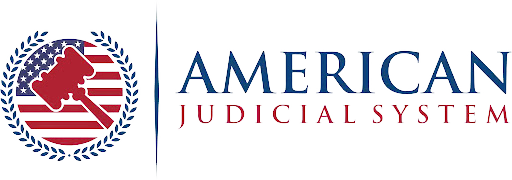Running a fleet that crosses multiple states involves more than managing routes and drivers. It requires navigating a constantly shifting web of state and federal regulations that rarely align.
Every state brings its own set of emissions limits, inspection cycles, and reporting rules. While federal law provides a framework, local variations often add layers of complexity that turn compliance into a daily balancing act.
The Real Compliance Divide
Federal Guidelines and State Autonomy
Federal regulations, governed by the FMCSA, establish the foundation for fleet safety and operation. These include hours-of-service limits, equipment standards, and electronic logging requirements.
States, however, retain the authority to enforce those rules in their own way. That independence creates uneven enforcement and makes multi-state operations difficult to standardize.
Inconsistent Enforcement of Digital Logging Rules
The ELD Mandate was designed to unify driver hours reporting, but its enforcement looks different across the country. Some states require real-time data transfers, while others accept manual inspections or batch uploads.
This patchwork creates challenges for carriers that operate coast to coast. A device configuration that passes inspection in Iowa can raise questions in California simply because local enforcement expects a different format.
Emissions Standards That Don’t Match Up
Environmental compliance is another major source of inconsistency. The EPA sets national standards, yet states like California, Oregon, and Washington enforce stricter rules through their air resource boards.
For fleets, this means maintaining two levels of certification. A truck that meets federal emission limits can still be out of compliance when it enters a state that follows California’s tougher guidelines.
Vehicle Inspections and Safety Standards
Inspection requirements vary as widely as road conditions. Some states demand semiannual checks, while others only inspect vehicles once a year.
The inspection focus also changes — one state might emphasize braking systems, another might scrutinize emissions controls or cargo security. This inconsistency forces fleets to plan maintenance cycles around geography rather than mileage.
Financial and Legal Risks of Noncompliance
When compliance fails, the penalties can be immediate and severe. Fines for violations often start around $1,000 and can exceed $10,000 for repeated or serious infractions.
Beyond financial losses, noncompliance exposes carriers to litigation and damaged business relationships. A single enforcement action can trigger insurance reviews, lost contracts, or heightened inspection frequency.
Administrative Complexity and Human Error
Fleet compliance generates an enormous paper trail. Every vehicle inspection, emission certificate, and permit renewal must be logged and stored correctly.
When this information lives across multiple systems, the potential for human error increases. Missed deadlines or misplaced records can quickly turn into operational downtime.
How Fleets Can Solve Cross-State Compliance Challenges
Centralizing Data and Documentation
The first step toward consistency is centralization. Housing all compliance information in one digital platform eliminates duplication and reduces the risk of missing critical documents.
A central hub provides quick access during audits and simplifies reporting. It also makes it easier for compliance teams to monitor expiration dates and inspection schedules in real time.
Automating Monitoring and Alerts
Automation turns compliance management from a reactive process into a proactive one. ELD systems can track driver hours, inspection dates, and emissions levels without manual input.
Automated alerts notify compliance officers before a deadline passes or an issue arises. This keeps vehicles road-ready and reduces the likelihood of preventable violations.
Building an Integrated Compliance Platform
Integrated platforms connect every layer of compliance — from driver logs to maintenance and emissions tracking — into one ecosystem. These tools bridge the gap between federal reporting and individual state databases.
When a regulation changes, the system updates automatically, saving hours of administrative labor. This integration creates consistency, even when operating across multiple jurisdictions.
Standardizing Procedures Across States
Consistency in policy is as important as technology. Fleets that create a single internal compliance standard can reduce confusion for drivers and managers alike.
Whether it’s record retention, vehicle inspection intervals, or emissions testing, uniform internal practices ensure every team member follows the same process, regardless of state.
Training Drivers and Maintenance Teams
Drivers represent the front line of compliance. Regular training helps them understand inspection protocols, logging accuracy, and documentation expectations.
Maintenance crews need the same level of awareness. When everyone understands their compliance role, the organization avoids costly oversights that start on the road or in the garage.
Implementing Predictive Maintenance Programs
Predictive maintenance relies on real-time data to anticipate vehicle issues before they cause downtime. Fleet management systems can schedule inspections and repairs automatically based on usage and performance metrics.
By aligning predictive maintenance with state inspection calendars, fleets stay one step ahead. This approach improves reliability and prevents compliance gaps tied to overdue servicing.
Conducting Regular Internal Audits
Internal audits provide a clear picture of how well compliance systems actually work. These reviews uncover documentation gaps, outdated records, and process inefficiencies.
Performing audits quarterly or biannually builds discipline and readiness for external inspections. It also demonstrates a culture of accountability that regulators respect.
Designating a Compliance Team
Creating a dedicated compliance team gives fleets the oversight they need to manage complexity. This team can focus on interpreting regulations, maintaining documentation, and communicating with state agencies.
A specialized department keeps compliance from becoming a side task for dispatchers or managers. Concentrated expertise ensures consistent attention to evolving requirements.
The Long-Term Benefits of Strong Compliance Systems
Reduced Risk and Fewer Penalties
Integrated compliance systems dramatically reduce violations. Automated tracking prevents expired documents and missed inspections before they reach enforcement officers.
When violations decrease, insurance premiums and audit costs often follow. A compliant fleet runs more smoothly, faces fewer interruptions, and earns better reliability scores.
Greater Operational Efficiency
Streamlined compliance saves both time and money. Teams no longer spend hours managing separate databases or manually checking expiration dates.
Real-time visibility into fleet readiness helps managers plan routes and maintenance more strategically. The result is higher uptime and improved delivery reliability.
Improved Reputation and Client Trust
Clients value carriers that operate transparently and within the law. A proven compliance record signals professionalism and accountability.
Strong compliance performance strengthens long-term partnerships. It also positions fleets as preferred service providers for clients with strict oversight requirements.
Support for Environmental Responsibility
Modern compliance practices contribute to cleaner, more sustainable operations. Fleets that maintain emissions efficiency reduce fuel consumption and environmental impact.
This focus on sustainability isn’t just regulatory, it’s strategic. Customers increasingly favor carriers committed to responsible transportation practices.
Conclusion
Managing compliance across multiple states is one of the hardest jobs in transportation. Each border introduces new standards, new reporting systems, and new risks.
But with centralized systems, automation, and well-trained teams, fleets can turn compliance from a constant struggle into a competitive strength. The fleets that invest in proactive compliance today will move faster, operate cleaner, and stand stronger tomorrow.










